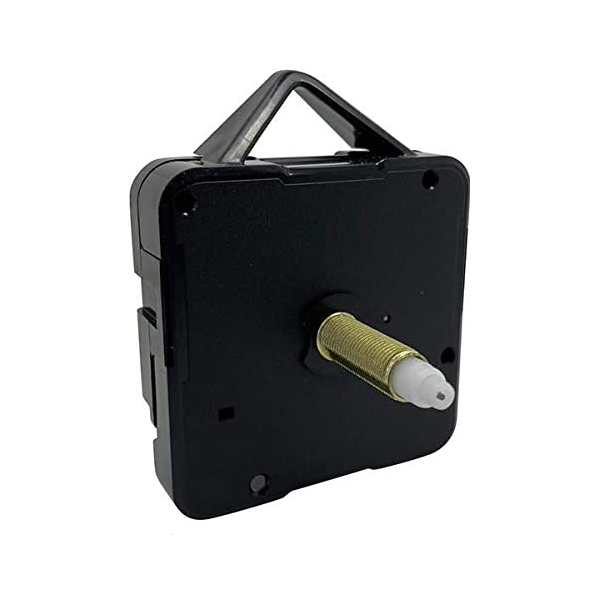

- Servo motor arduino ticking movements how to#
- Servo motor arduino ticking movements full#
- Servo motor arduino ticking movements code#
While the tail we've created could probably be a great part of a good 'Xenomorph' costume with a bit of black paint, there are naturally a lot of different ideas you could implement to change the basic design we came up with and adapt it to your needs.
Servo motor arduino ticking movements code#
You can check out a detailed view of all the electronic parts you will need as well as getting all the code you need to get it working by clicking this link.

Our build also features a remote control system attached to a handheld joystick to allow you to directly manipulate the tail's motion when you want to control it manually. The tail's movement is primarily driven by a trio of servo motors attached to the tail and controlled by a gyro stabilized accelerometer to determine the tail's movement when you walk around or move from side to side. You'll also need access to at least a basic 3d printer to get all the parts you will need in order to put this project together. This project is definitely meant for advanced users since the construction, assembly, and coding required to get the tail working as desired is moderately complex. With this new wearable Arduino gadget, which is also one of the first we've put together here, your new Velociraptor costume will never be the same again. With the help of an Arduino accelerometer module, we'll be creating a working animatronic tail that can help bring your fantasy outfits to life like never before.

# cv2.putText(img, str(int(fps)), (20, 50), cv2.Today's project is one that will certainly be of interest to cosplayers or anyone who has ever taken their Halloween outfits extremely seriously. # length, img, lineInfo = detector.findDistance(8, 12, img) Both Index and middle fingers are up : Clicking Mode Y3 = np.interp(y1, (frameR, hCam - frameR), (0, hScr))ĬlocX = plocX + (x3 - plocX) / smootheningĬlocY = plocY + (圓 - plocY) / smoothening X3 = np.interp(x1, (frameR, wCam - frameR), (0, wScr)) Get the tip of the index and middle fingersĬv2.rectangle(img, (frameR, frameR), (wCam - frameR, hCam - frameR),

LmList, bbox = detector.findPosition(img)Ĭv2.putText(img, str(int(fps)), (10, 70), cv2.FONT_HERSHEY_PLAIN, 3,Īrduino = serial.Serial('COM11', 500000, timeout=1) Self.results = (imgRGB)įor handLms in _hand_landmarks:ĭef findPosition(self, img, handNo=0, draw=True): ImgRGB = cv2.cvtColor(img, cv2.COLOR_BGR2RGB) Here’s a list of the main cookies we use, and what we use them for:Įach web browser handles cookie management differently, please follow instructions for your chosen browser:ĭef _init_(self, mode=False, maxHands=2, detectionCon=0.5, trackCon=0.5):
Servo motor arduino ticking movements how to#
Each browser is different, so check the ‘Help’ menu of your particular browser (or your mobile phone’s handset manual) to learn how to change your cookie preferences. If you’d prefer to restrict, block or delete cookies from or any other website, you can use your browser to do this. Our cookies don’t store sensitive information such as your name, address or payment details: they simply hold information about how you use our site so we can improve your experience and resolve any errors.
Servo motor arduino ticking movements full#
To make full use of enjoy the personalised features and ensure the websites works to its full potential, your computer, tablet or mobile phone will need to accept cookies. (Information Commissioners Office) Our Cookies Policy Using such technologies is not, therefore, prohibited by the Regulations but they do require that people are told about cookies and given the choice as to which of their online activities are monitored in this way. The use of cookies and similar technologies have for some time been commonplace and cookies in particular are important in the provision of many online services. At we use cookies to personalise your experience and help us identify and resolve errors. Cookies are tiny data files stored in your web browser when you visit a website.


 0 kommentar(er)
0 kommentar(er)
